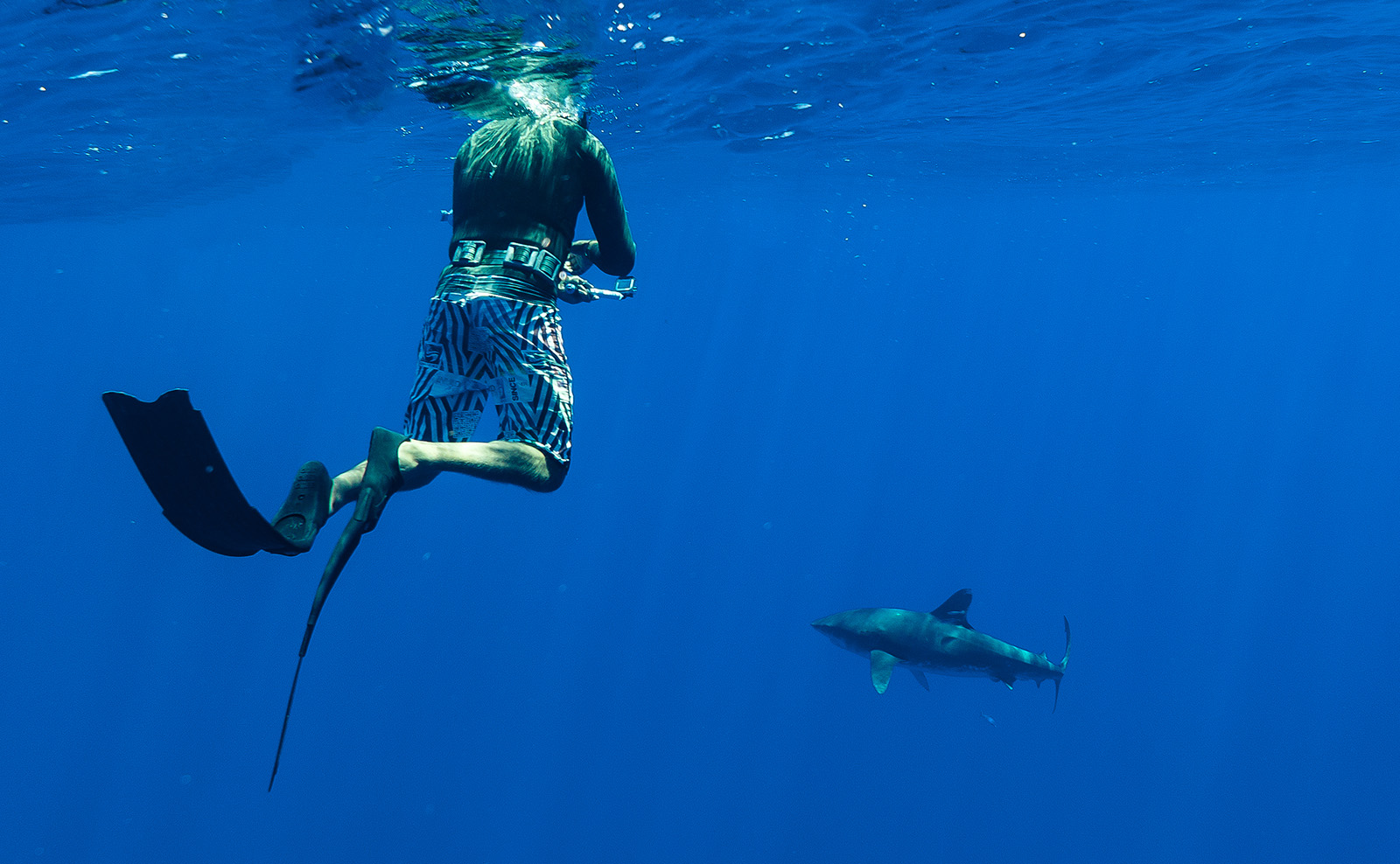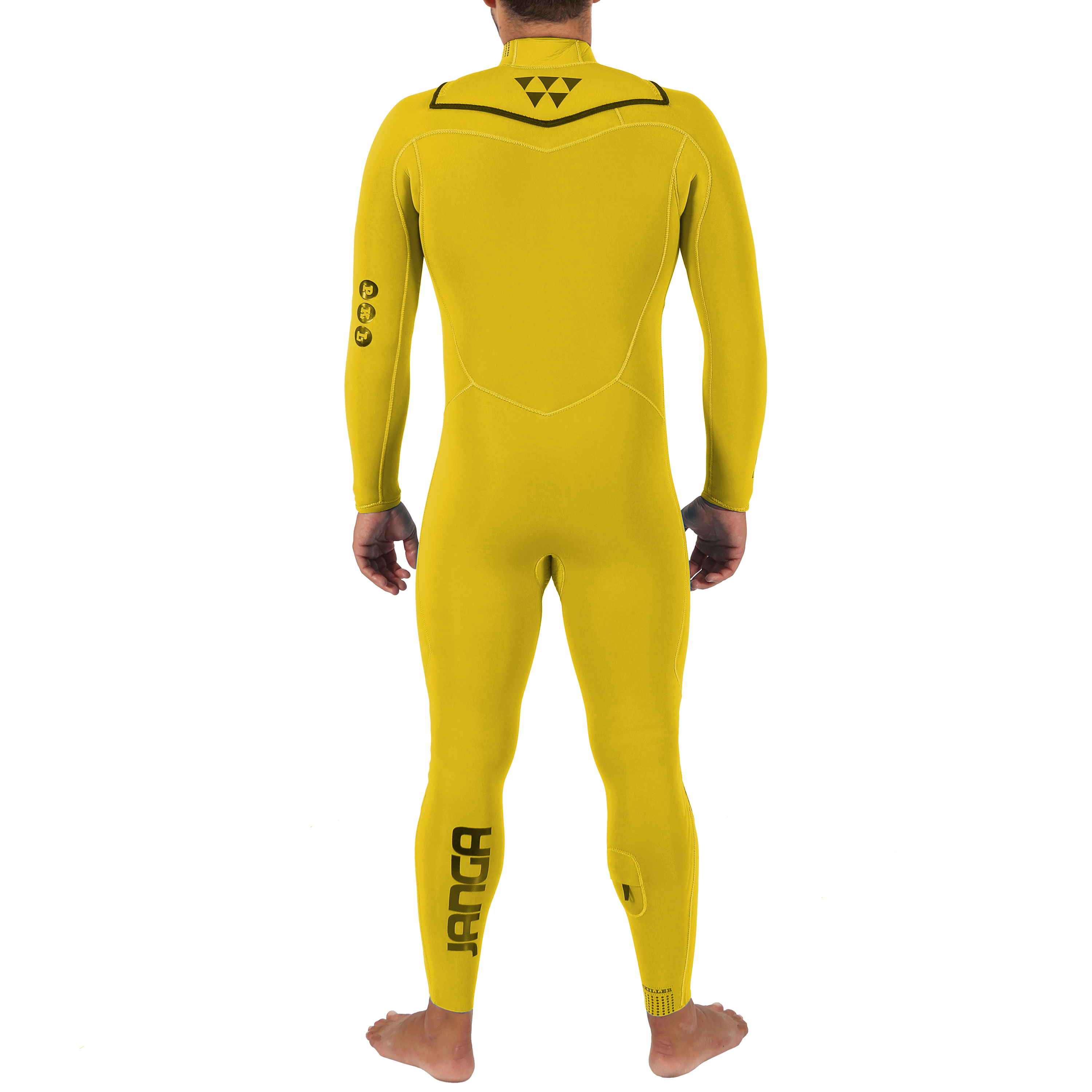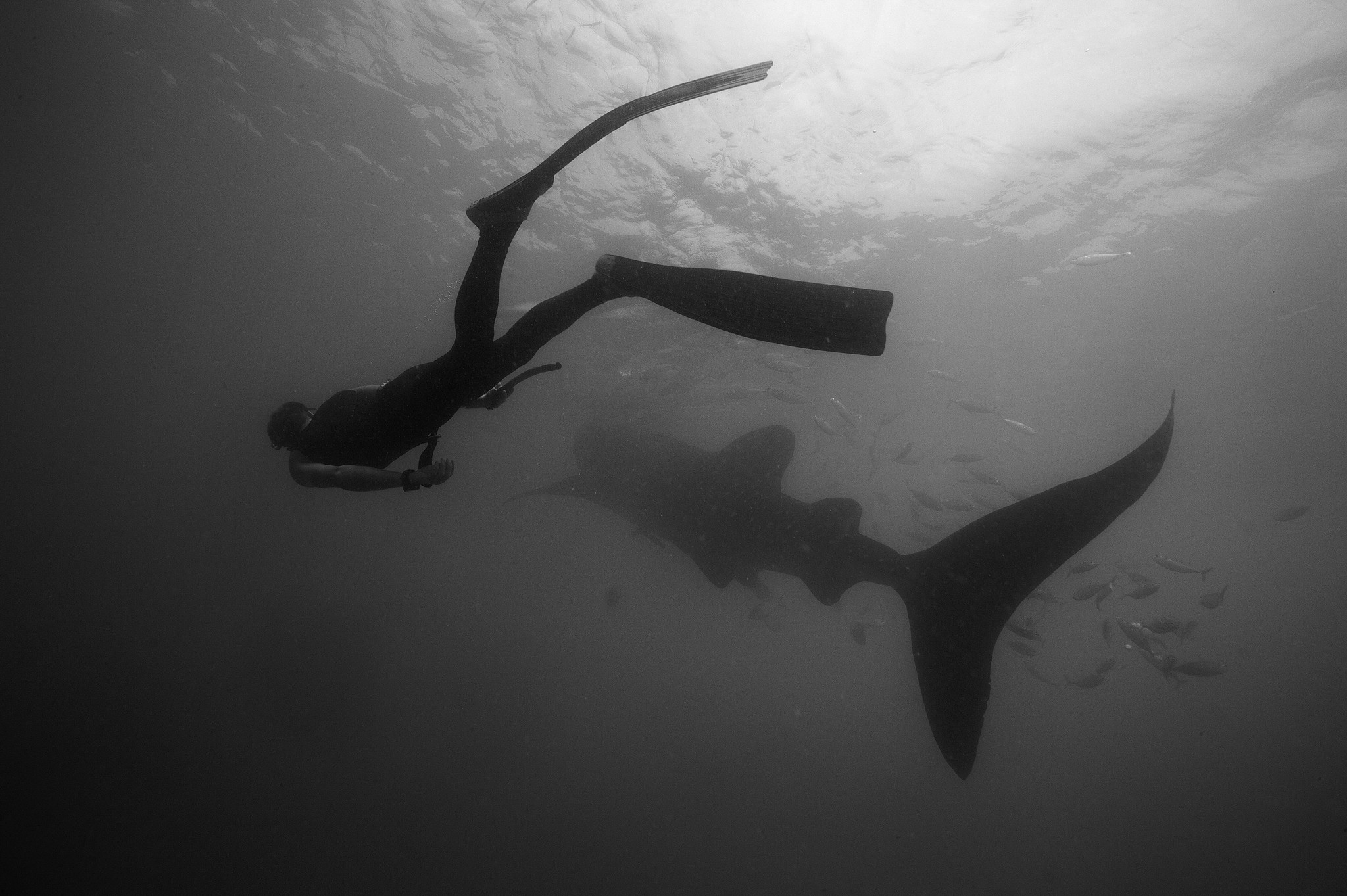The Colors and Patterns That Attract Sharks: Freediving Attire to Avoid
Introduction
Freediving is a thrilling experience that immerses us into the underwater world in its purest form. It is especially popular in tropical locations like Cabo Verde, a hidden gem of the Atlantic known for its pristine waters and rich marine life.

Credits: montereydiver, flickr
However, the joy of freediving comes with inherent risks, and a common one that captures the imagination is encountering sharks. It's a rare occurrence, yet one that's worth understanding to ensure your safety. This article sheds light on how freedivers' attire - specifically, the color and pattern - can influence visibility to sharks.
Understanding Shark Vision
Sharks' vision is different from humans'. Instead of a wide range of colors, they see mainly contrasts due to a high number of rod cells in their eyes. This capability to distinguish contrasts over colors is an evolutionary adaptation to the underwater world, where light levels are low, and colors are less distinguishable the deeper you go.
In their natural environment, sharks are more likely to be attracted to high-contrast objects, as these stand out more prominently. Understanding this allows freedivers to make smarter choices about their diving attire. It is often best to wear colors and patterns that blend into the underwater environment, decreasing the contrast and thus reducing the likelihood of attracting a shark's attention.
Bright Colors and Sharks

Credits: Janga
Bright colors in the marine environment stand out due to their contrast against the blues and greens of the ocean. It has long been suggested that these colors might attract the attention of sharks. While there is no definitive scientific evidence supporting this claim, it is still a plausible theory considering sharks' heightened sensitivity to contrast.
A study conducted in 2013 tried to unravel the truth. Researchers exposed bull sharks to different colored targets, ranging from bright yellow and white to more subdued blue. The result was that sharks interacted more frequently with the high contrast targets compared to the low contrast ones. The study concluded that while color in itself might not be the primary attractor for sharks, the contrast created by bright colors could potentially increase a freediver's visibility to sharks.
The "Yum Yum Yellow" Myth

Credits: Janga
The “Yum Yum Yellow” theory originated from a divers' joke suggesting that sharks are particularly attracted to the color yellow. While yellow objects may be more visible in the water due to their contrast against the ocean's blue, the question remains whether yellow specifically attracts sharks.
In Western Australia, researchers set up an experiment using various colored targets, including yellow. The results showed that sharks didn't interact more with the yellow targets than with those of other colors. This suggested that factors such as contrast and object visibility could be more important to sharks than the actual color.
High Contrast Colors

Credits: Janga
Given sharks' heightened sensitivity to contrast, it's plausible that high-contrast colors could make freedivers more visible to sharks. Colors like white, yellow, and even fluorescent ones might potentially stand out against the ocean's predominantly blue and green backdrop.
This was demonstrated in a study conducted in Cabo Verde. Over the span of a year, researchers observed freedivers wearing variously colored attire and noted any shark interactions. The results indicated a slight increase in shark sightings when divers wore high-contrast colors compared to those wearing colors that blended into the environment.
Stripes and Spots: Patterns That Might Attract Sharks

Credits: Janga
Beyond color, attire patterns can also potentially impact shark behavior. Many harmful or venomous marine species display distinctive patterns, like stripes and spots, serving as a warning to predators. Therefore, wearing these patterns could make a freediver more noticeable to sharks.
A noteworthy incident occurred in 2005 when a diver in Cabo Verde wearing a striped wetsuit had a close encounter with a bull shark. The shark, which typically would keep its distance, showed increased interest and circled the diver for several minutes before moving away. This event, although not definitive, supports the notion that attire pattern can influence a shark's interest.
Freediving Attire Recommendations
Prefer blues and greens: these colors blend well with the marine environment.
Avoid high-contrast colors: these colors might make you more noticeable to sharks.
Stick to solid patterns: patterns such as stripes and spots could potentially draw sharks' curiosity.
How Other Factors Influence Shark Behavior
While attire can play a role in influencing shark behavior, it's not the only factor. Aspects such as the divers' behavior, the time of the dive, local shark populations, and the presence of injured animals or fish can also influence shark activity.
For instance, when freediving in Cabo Verde, you should be aware that there is a known increase in shark activity during dawn and dusk. This period is known as crepuscular hours, a time when many species of sharks, including bull sharks, are most active.
Safety Tips Beyond Attire
Avoid diving during crepuscular hours: Dawn and dusk are when sharks are usually most active.
Do not carry speared fish or bait: The scent could attract sharks.
Always dive with a buddy: It's safer and could deter sharks.
Respect marine life: Keep a safe distance from all marine creatures, including sharks.
Freediving is a thrilling experience that immerses us into the underwater world in its purest form. It is especially popular in tropical locations like Cabo Verde, a hidden gem of the Atlantic known for its pristine waters and rich marine life.

Credits: Klaus Stiefel, flickr
Things to Do When You See Sharks Underwater
Turn on your cam! Yes, this is damn rear thing, because usually freedivier spots are selected at the places where are no chances to meet any shark. Capture this very moment!
Stay calm! Keeping your pokerface is important, because when you've noticed a shark, that means some of them are following you at least for several minutes. They saw you first! If they did't attack before, it is very likely they just come to smell you!
Do not try to swim away: Sharks are BMW's among other fishes and they are fast as hell, so no chance you outrun them.
Make a turn and finish your dive on the surface immidiately.
Stay at the buoy verticaly. No finning!
If one of the sharks approaches you, use your hands to turn its head away.
Remember: the sharks are curious like puppies, they just want to understand what people are.
Some Precausions to Follow
Always use a wetsuit. Nobody eats rubber things.
Check yourself if you have any wounds BEFORE the dive.
Conclusion
Freediving, whether in Cabo Verde or elsewhere, is a thrilling and immersive experience. However, it comes with certain risks, one of which is potentially encountering sharks. By understanding sharks' visual perception and making smart choices about attire color and pattern, we can mitigate this risk.
When freediving in shark-populated waters, it's advisable to opt for wetsuits with colors that blend into the underwater environment to minimize attention. High-contrast or reflective patterns should be avoided as they can potentially stimulate shark curiosity.
Understanding and respecting the marine ecosystem is vital, and your choice of attire can contribute significantly to a safer freediving experience. Also, your personal SAFETY should always come first in any diving expedition. By being informed and respectful of the marine environment, we can coexist with the marine life we so admire, including the often misunderstood shark.




